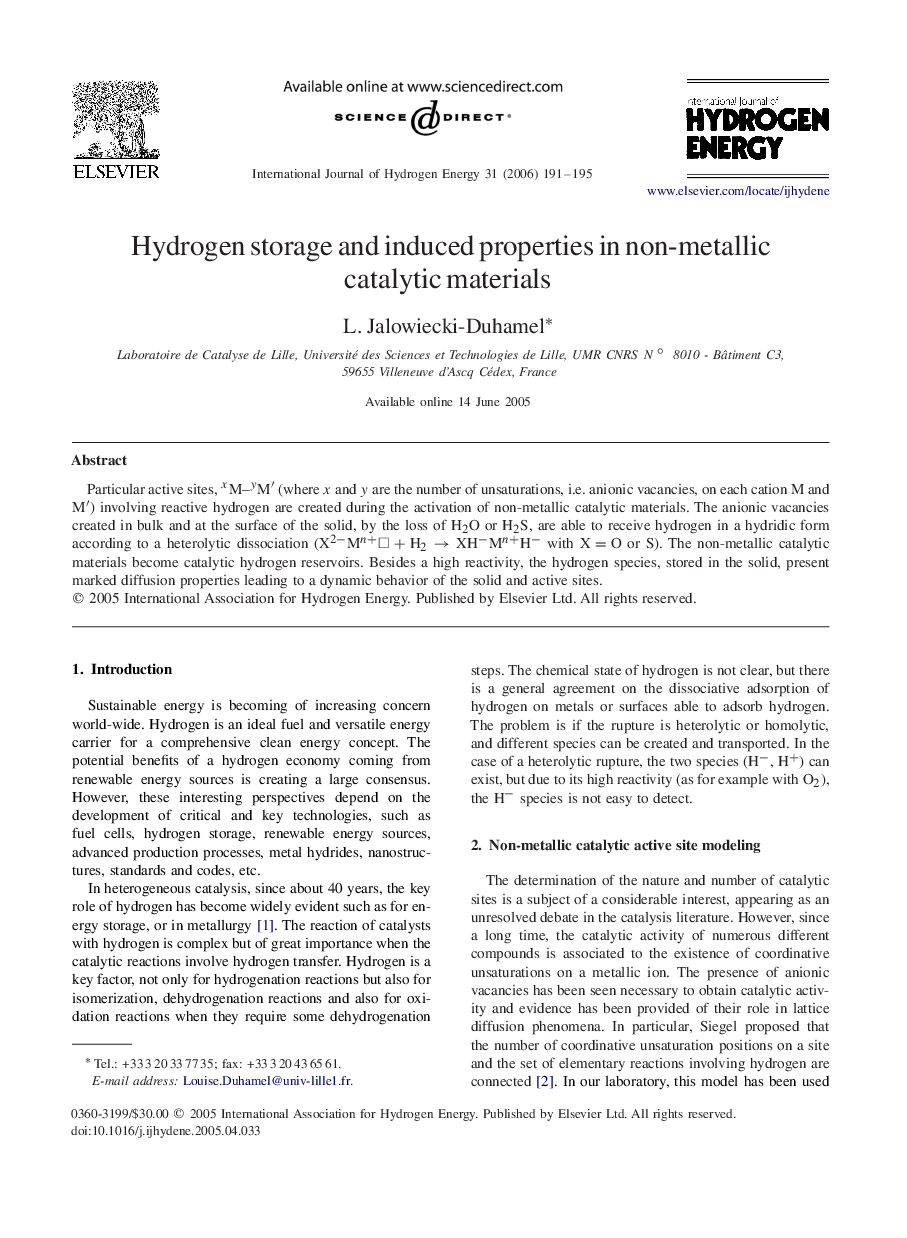| Article ID | Journal | Published Year | Pages | File Type |
|---|---|---|---|---|
| 1275781 | International Journal of Hydrogen Energy | 2006 | 5 Pages |
Abstract
Particular active sites, xM-yMâ² (where x and y are the number of unsaturations, i.e. anionic vacancies, on each cation M and Mâ²) involving reactive hydrogen are created during the activation of non-metallic catalytic materials. The anionic vacancies created in bulk and at the surface of the solid, by the loss of H2O or H2S, are able to receive hydrogen in a hydridic form according to a heterolytic dissociation (X2-Mn+â¡+H2âXH-Mn+H- with X=O or S). The non-metallic catalytic materials become catalytic hydrogen reservoirs. Besides a high reactivity, the hydrogen species, stored in the solid, present marked diffusion properties leading to a dynamic behavior of the solid and active sites.
Related Topics
Physical Sciences and Engineering
Chemistry
Electrochemistry
Authors
L. Jalowiecki-Duhamel,
